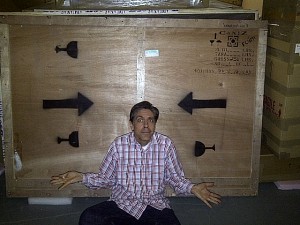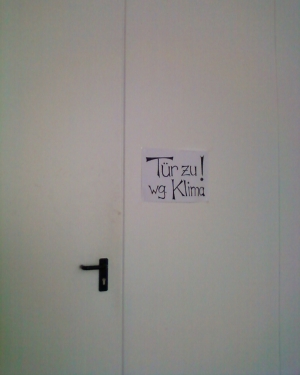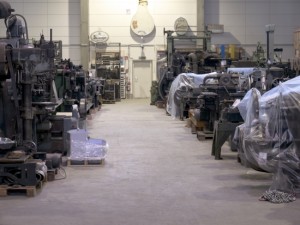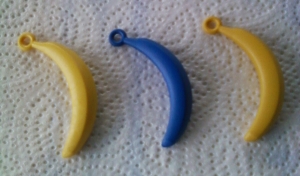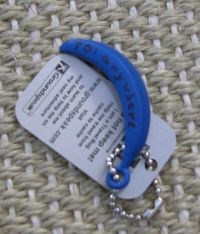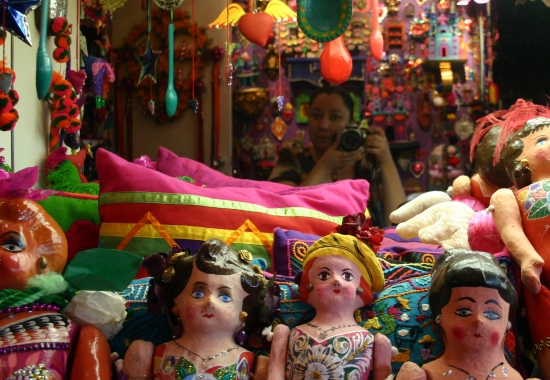Yes, a registrar’s work is serious business. All those valuable objects in our collection, all those tasks in documenting, we registrars are very serious and no-nonsense, right? Right! Why is it then that sometimes at a meeting you see the registrar’s team caught in helpless giggling? Because our job is crammed with unintended humor!
I remember that one day a crate for an exhibition arrived that said “This side up” on two totally different sides. Unfortunately, I haven’t taken a picture. You can imagine how happy I was to receive the picture on the left hand side taken by Noel Valentin of El Museo del Barrio, New York.
Not to mention the humor you can take out of data base entries. How about “Knife with missing blade and missing haft”? I guess it’s a smart way to tell us that this object was a total loss. Or a note I found in the “condition” field of our data base saying “needs vacuuming”. We have the vacuum cleaner always at hand so I guess it took more time making the entry than actually vacuuming the object… And then there are condition reports. I remember a colleague mailed she actually found “ugly, but durable” in one report.
I love stupid inscriptions best. I try to make photos every time I see something stupid written on something. I lost a personal favorite, a box which was marked with “Vorsicht Inhalt” (“Caution content!”). It turned out that it contained a fire extinguisher for a car and the inscription was a warning not to throw away the box (which was a box for a bottle of wine) because there was a valuable still undocumented artifact inside! Well, from the inscription I expected something with at least asbestos or quicksilver…
What I found is the one you can see on the right hand side which reads “Close door! Because of climate”. Of course we all know what was meant by this sign: the door should be kept shut because of the temperature and the relative humidity that has to be kept stable in the room behind. But somehow, with all the discussions about climate change… well, it looks like a quite simple solution.
Apparently, I’m not the only one who is fond of unintended humor concerning registrar’s work. Take a look at this wonderful film “Stuff Museum People Say” that the Atlanta History Center made: http://www.youtube.com/watch?v=IhAJiz2ixuY In 1:23 you can see a scene quite typical for a registrar: a staff member hurts herself and the registrar shouts “Bleed away from the artifacts!”
Oh yeah, and then there are the failures when it comes to storing objects. Liz Walton made a blog out of this: Art Storage Fail. Enjoy, and if you have something that fits: submit it to her.
Let me close this post with two unintentionally humorous postcards I received from our chimney sweeper. Our outside storage collection deposits are not staffed 24/7. He learned this from the many, many times he came to do the yearly check-up and nobody was there. So now he sends a postcard first to make an appointment. The first one I received read: “I’m coming February 25 at 10:15 a.m. or on the following days”. After he didn’t show up on the 25 I called him up to make the appointment for February 26, 11 o’ clock and everything went fine. The following year I received a postcard “We are coming in February. Please do not wait, we will call you to make an appointment.” Again, all went fine after we phoned but until today I can’t get the picture out of my head of someone waiting the whole February for a chimney sweeper to arrive…
Angela
